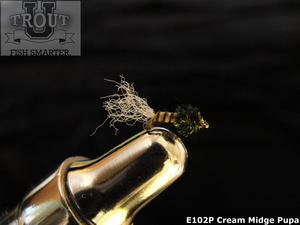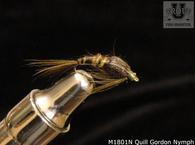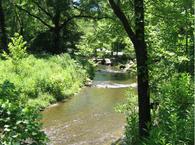
1. Get a good hatch chart. You will need a hatch chart specific to the stream/area you want to fish. Most hatch charts are not specific enough to the local area, nor are they made from the proper stream samplings of the insects in the stream. They are generic and thoughtlessly created. Don’t use them. Currently, we only know of one place to find good hatch charts.
2. Use the hatch chart properly. First, keep in mind that the phrase “hatch chart” is a misnomer. The hatch chart actually tells when the insects fly away from the water as adults, not when the eggs of the insects actually hatch. For example, when you see that a fly should “hatch” at a certain time, keep in mind that you are actually seeing when the fly should change from a nymph to an adult. In other words, fish with a fly imitating the nymph stage of that insect in the couple of weeks immediately before the time of the “hatch” shown on the chart, and fish a fly imitating the adult stage (i.e. a dry fly) of the same insect at the time of the “hatch.” Note that the trout only come into contact with the adult stage of the flies (imitated by a dry fly) for a very brief period of time, or not at all, while the trout will have a longer period of time to encounter the nymph stage of the insects. Also, understand that the hatch chart may need to shift a little one way or the other, based on the year’s weather.
 4. Use the most imitative flies. Sure, a generic fly may work just fine (or so you think) sometimes (especially in swift water, where the trout don’t get a chance to inspect the fly closely), but overall you will likely catch more fish from well-tied flies that closely match specific insects in the stream. The best flies we’ve come across are the Perfect Fly series. Think of it as if you’re going to a restaurant and placing an order. When your food arrives, it looks like it was made last week. Depending on your mood (and/or your time pressure), you may eat it, or you may refuse it and look for something better. We are pleased to announce that through a special arrangement with James Marsh, we at Trout University will be able to make the Perfect Flies series of flies available on Trout University in the near future.
4. Use the most imitative flies. Sure, a generic fly may work just fine (or so you think) sometimes (especially in swift water, where the trout don’t get a chance to inspect the fly closely), but overall you will likely catch more fish from well-tied flies that closely match specific insects in the stream. The best flies we’ve come across are the Perfect Fly series. Think of it as if you’re going to a restaurant and placing an order. When your food arrives, it looks like it was made last week. Depending on your mood (and/or your time pressure), you may eat it, or you may refuse it and look for something better. We are pleased to announce that through a special arrangement with James Marsh, we at Trout University will be able to make the Perfect Flies series of flies available on Trout University in the near future.




